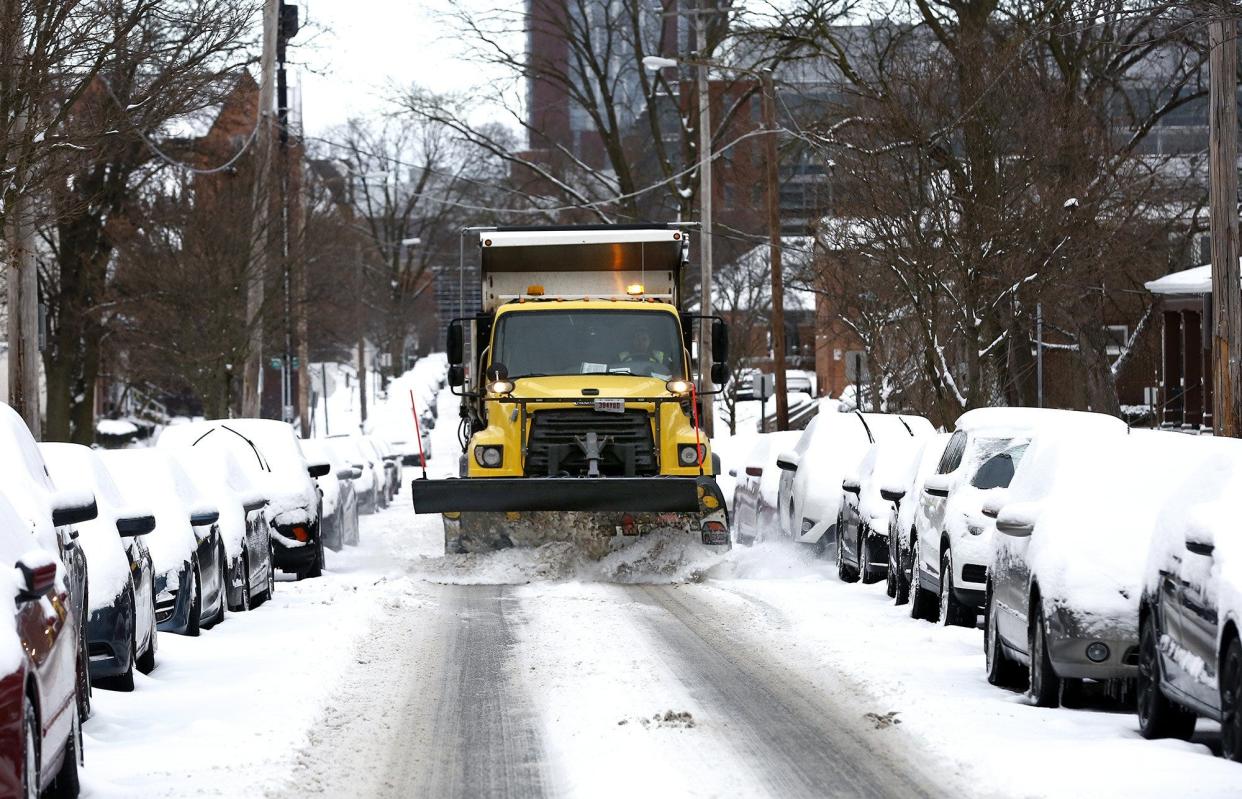Snow way! Columbus likely to have its first February on record with no measurable snowfall

Columbus is likely to get through February without any measurable snowfall for the first time since the National Weather Service began keeping such records for the city in 1885.
That’s if the closing days of the month don’t produce any accumulation of the white stuff, which NWS office in Wilmington says is not very likely based on the immediate forecast through the end of February.
Until this year, the NWS says the lowest amount of snowfall ever measured in February in Columbus was .2, or two-tenths, of an inch in 2005. So far this month — the NWS reports Columbus hasn't had any measurable snowfall.
Two records on February 23, 2023:
A record high of 73 was set at Columbus today at 3:04 PM. The old record of 72 was set in 2017.
A record high of 70 was tied at Dayton today at 3:22 PM. The old record of 70 was set in 2017.— NWS Wilmington OH (@NWSILN) February 23, 2023
The possibility of no measurable snowfall comes as the weather in the Columbus has smashed records for warmth three times this month, most recently on Thursday when the high temperature in Columbus of 73 degrees at John Glenn Columbus International Airport broke the previous record of 72 degrees for Feb. 23 set in 2017.
That makes this February the first on record to have three days with temperatures above 70 degrees, with the previous record being two days above 70 degrees in 2000 and 2017, according to the NWS.
Despite an approximately 40-degree plummet in temperatures overnight Thursday into Friday, the NWS had forecast a chance of only a few flurries in places with no accumulation.
Why is it so warm here this winter?
Much of the American Southwest and along the Gulf Coast and eastern seaboard, including Ohio and neighboring states, are experiencing the third winter in a row under the “La Niña” weather pattern, according to the NWS.
Columbus weather: How is warmer-than-normal temperatures affecting your lawn and garden?
The climate pattern, a natural cooling of sea water in the tropical Pacific Ocean, affects the position of the jet stream and thus, the weather across all of North America.
In the lower and middle Ohio Valley, La Niña tends to increase the chances of warmer-than-normal weather and more rain than snow, the NWS says.
Have agencies saved money on snow removal costs this winter?
This winter, the Ohio Department of Ohio Transportation has so far used 57,846 tons of salt versus 92,367 tons last year in central Ohio. Brine, which is a mixture of salt and water used for deicing, is also down in central Ohio from 1,078,145 gallons used last year versus 571,935 gallons this year. This year, central Ohio plow drivers drove 603,411 miles versus 1,008,007 miles last year, the agency reports.
ODOT will begin to realize any possible savings from reduced load of material used next winter when they restock for the season, spokesperson Breanna Badanes said. She did say that the reduced amount of round-the-clock snow removal shifts and overtime has saved money on labor costs so far, but could not provide an immediate cost savings.
Columbus Department of Public Service spokesperson Charles Newman said that while the city has used less salt this year, they used more liquid deicer to deal with icy conditions earlier in the season.
Newman added that a reduction in winter weather means less potholes on the road — and more time for crews to properly repair them. The department has repaired 5,000 more potholes so far this season compared to last year, and has had more time — and beneficial weather this season — to use more long-term repair solutions rather than quick fixes.
While the weather has been fair, Newman said, snow crews still remain prepared for sudden winter weather.
“In our business, we still have a lot of days left,” Newman said. “We’re grateful for the weather — it has been on our side this year.”
@Colebehr_report
Cbehrens@Dispatch.com
This article originally appeared on The Columbus Dispatch: Columbus may have its first February on record without measurable snow

